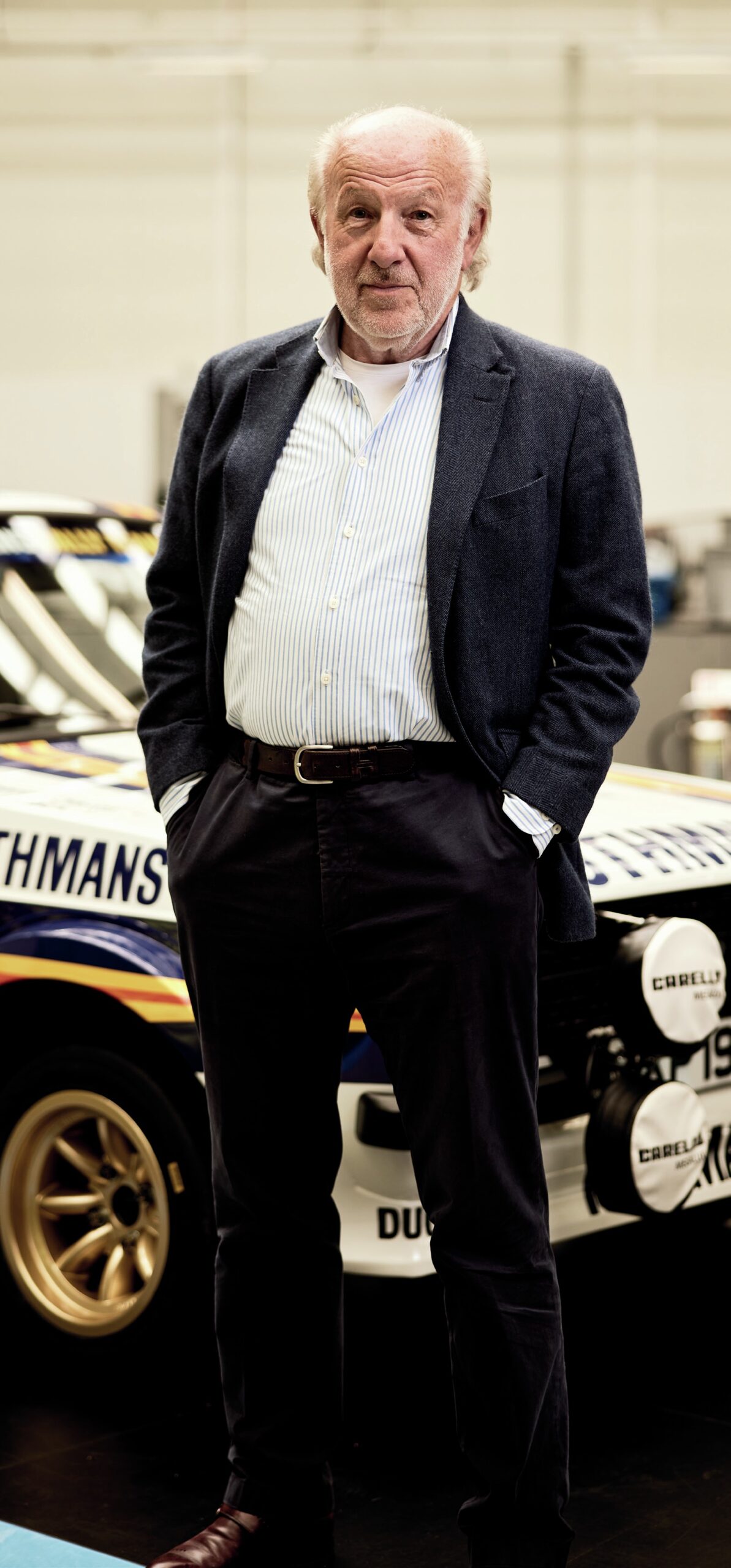David Richards: The Motor Sport Interview
From his early days as a spectator, David Richards, the Prodrive chairman and head of Motorsport UK has lived and breathed racing. Here he talks bust-ups with Colin McRae, his failed Formula 1 plans and the simple joys of British rallying
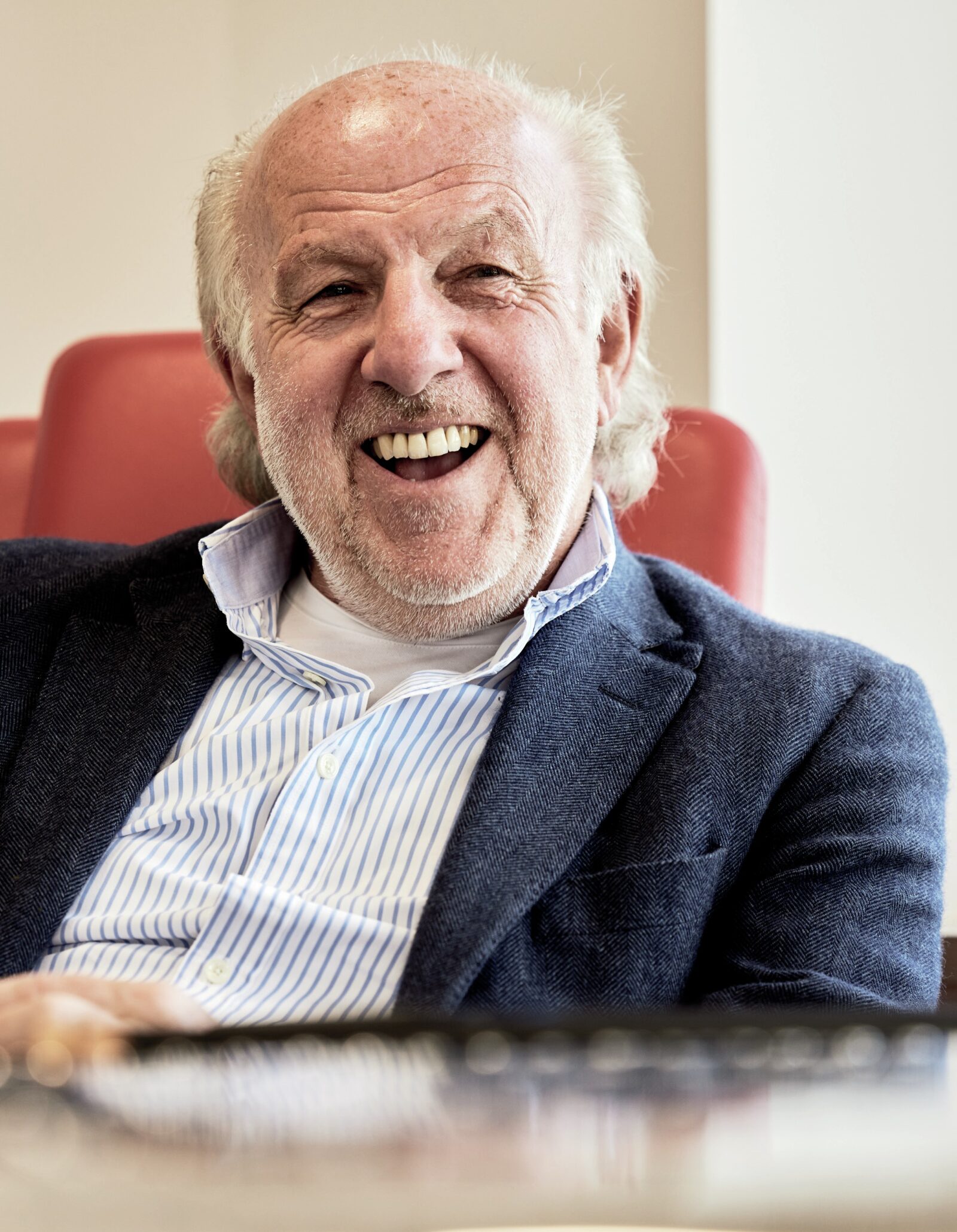
Richards came to Aston's rescue in 2007
Richard Davies
When he last spoke at length to Motor Sport, in September 2007, a central topic for Prodrive CEO David Richards was his firm’s planned arrival in Formula 1, with chassis and engines purchased from McLaren and Mercedes. Or so he thought. That was torpedoed by a governmental U-turn on customer cars and other factors, so Richards has yet to spearhead a grand prix team of his own (though he has done so for both Benetton and BAR-Honda).
Termination of the F1 project was hardly the trigger for a quiet life. Before we sit down to chat, Richards offers a guided tour of the Prodrive building, located close to Junction 11 of the M40 in Banbury. There is also a secondary hub, in Milton Keynes, and Prodrive today has a 500-strong workforce. Most people in the sport know about the company’s rally roots, its Aston Martin GT programme and various successful touring car campaigns, but it also produces high-end Hummingbird folding bikes, electric trucks and the BRX Hunter cross-country rally contender. It has collaborated with the British America’s Cup team, conducts a fair amount of road car work, is involved in the aerospace industry, working on jet engines, electrification programmes and the interior fittings of private jets, and also has a busy restoration programme, in particular with a few of its own bygone rally cars. It produced ventilators when such things were in desperately shortly supply as the Covid pandemic first hit – and at the time of our visit was also developing the internal mechanisms for lateral flow test machines. And while his company does all this, of course, he has also served since 2018 as chairman of Motorsport UK, Britain’s national sporting authority.
“Motor sport is perhaps 30 to 40% of Prodrive’s turnover at present,” he says, “and the rest is completely diverse. I often wonder what people think when they drive past and see our name on the building. I’m sure they assume we produce golf clubs.”
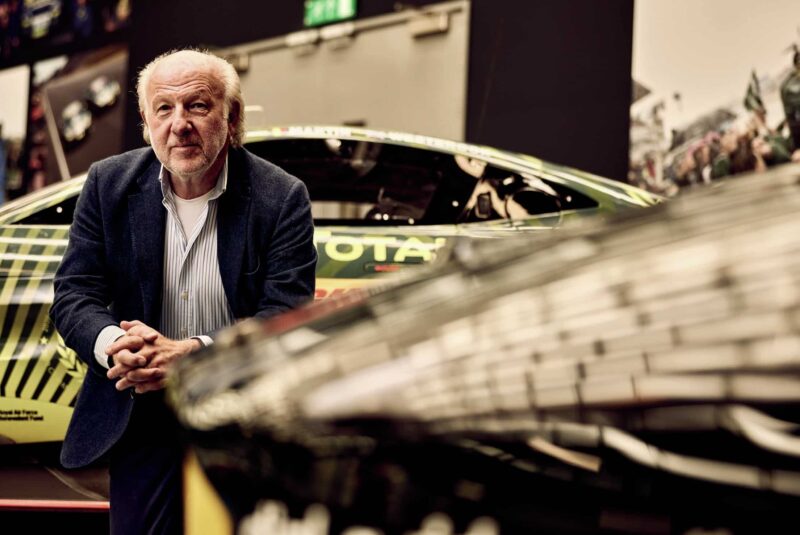
Since Prodrive’s creation in 1984, its achievements have included six WRC titles and six World Sportscar titles
Motor Sport: Prodrive’s expansion has been built on success in motor sport, but was there a light-bulb moment that persuaded a young lad from North Wales that this was what he wanted to do with his life?
David Richards: “The RAC Rally used to pass close to my home. We lived quite near to the Clocaenog stage and my father would take me and my three younger brothers. We’d wait for hours and watch every car, right down to the army Land Rovers that were usually last to come through. I guess that was about 1966. I was mad keen on photography too, and took lots of pictures that I developed at home in my bedroom. It became an annual ritual and I think that was the trigger.
“I had a 50cc motorbike when I was 16, largely because I lived on a farm in the middle of the countryside – there were no buses or anything, so I needed the bike to get around. But I was interested in the mechanical side.
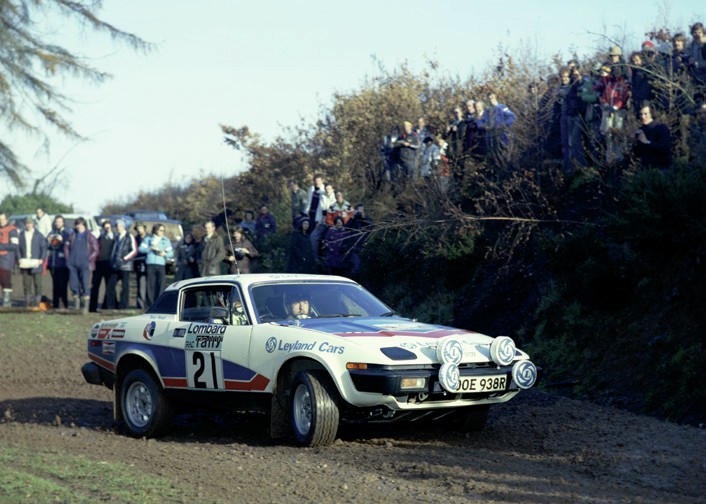
David Richards was Tony Pond’s co-driver at the 1976 RAC Rally in the British Leyland-run TR7
At that age I also bought an old Frogeye Sprite from a farmer, then stripped it down and rebuilt it in one of our barns. I painted it bright Bahamas Yellow, which was very fashionable at the time. That’s the car I was driving when I met my future wife, Karen. There’s a sequel to this, too, because I had no idea what to buy her when we celebrated our 25th wedding anniversary. Eventually I settled on a Frogeye, then had it restored and sprayed the same colour.”
You passed your driving test on your 17th birthday and qualified as a pilot not long afterwards. Explain…
DR: “I’d done a lot of driving on farm roads at home, so knew the basics, and my father was a member of the Institute of Advanced Motorists and had given me some useful tips. My parents were away on holiday, so for my 17th birthday I booked a test slot, took a couple of lessons in the morning and passed in the afternoon. They knew nothing about it until they got home and found me driving my mother’s car!
“With the flying, through school I was offered the chance to spend a weekend with the RAF at Biggin Hill. It sounded like fun, so four mates and I went down on the train. The RAF was on a recruitment drive at the time and offered to pay for me to attend flying school over the summer. I was 17 on June 3, began flying lessons before the end of the month and qualified as a pilot at the end of July.
“You could rent small planes then, so Karen and I – age 16 and 17 – would fly around North Wales waving to people or dive-bombing her parents’ house.”
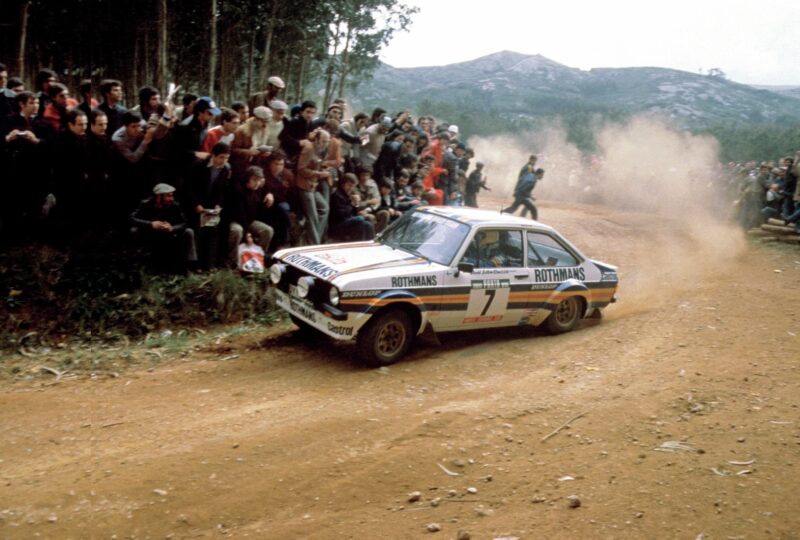
By 1980, David was travelling the world with Ari Vatanen in an Escort RS1800 – including the Portugal Rally in March
Once you had a driving licence, did you start travelling to watch rallies?
DR: “I didn’t, actually, because I’d become more interested in competing than watching. I’m not very academic and quite dyslexic, which didn’t help me at school, but I was pretty good numerically so ended up doing articles as a chartered accountant – and at the same time began competing on rallies. I crashed a few times early on and realised I couldn’t really afford to do that, so switched to co-driving, turned out to be OK at reading maps and would be out on road rallies in North Wales almost every weekend.
“I was then invited to do some stage rallies and in 1974 Tony Drummond and I won the first Autosport National Championship with an Escort, which meant lots of travelling around the country.
“On Friday mornings I’d make myself busy at work seeing a few clients, then skip off at lunchtime without telling anyone where I was going. I made sure people had seen that I was around. If my principal was looking for me after lunch, colleagues would say, ‘He’s definitely here somewhere,’ but by that stage I’d be halfway to Scotland or wherever, and of course there were no mobile phones.”
Your competitive career was bright but fairly brief. After that success in 1974 you had some good results with drivers such as Andy Dawson and Tony Pond, but enjoyed your greatest successes – including two victories on the Welsh Rally and a couple on the Acropolis – with Ari Vatanen, culminating in the world championship title in 1981. And then you stopped. Was it simply because you felt you had nothing more to prove?
DR: “I retired the day after the championship ended. Things had become pretty tense by the middle of that year. I was responsible for sorting out the sponsorship with Rothmans, as well as the co-driving, and Ari and I had been together for three years in a competitive environment, which was pretty hard going. I’d said to him that we needed to win that year because I didn’t think I could go through anything like that again. There was the financial stress, the mental stress – and by now Karen and I also had two young kids. Ari and I had some pretty serious accidents too, so I was beginning to wonder whether this was a sensible way to carry on.
“I’d already started thinking ahead about a commercial role and developing a business, as I really wanted my own team. That was the idea. I’d been to see Rothmans to tell them that I wanted to stop at the end of the year and asked whether there was any chance I might be able to do some consultancy work for them. They’d just agreed to sponsor the March Formula 1 team the following year, so they said, ‘OK, go and sort that problem out.’ In the end I was very involved in steering them towards Porsche in the World Sportscar Championship and eventually away from F1.”
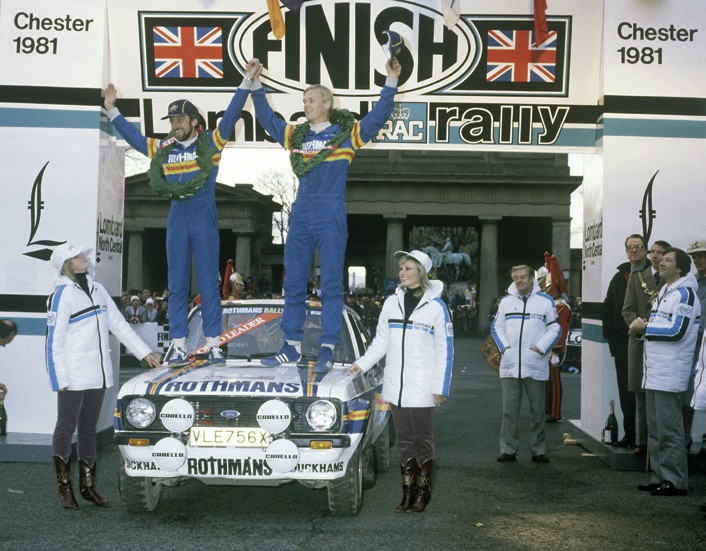
It was second place for Vatanen and Richards at the 1981 RAC Rally – but the world title was won
It’s quite a leap from sponsorship consultancy to setting up a new team…
DR: “I was very exposed to Porsche during that period and knew they were going to build the 959 for rallying in Group B. I thought it would be good to set up a team around that. I spoke to Rothmans and Porsche, both of whom liked the idea, but the car was still in the early stages of its development. I asked about a lightweight 911 to get the programme going and they built 20 examples of the 911 SC RS, of which we had six. That’s how we started in 1984, with Henri Toivonen in the European Championship, Saeed Al-Hajri in the Middle East and drivers such as Billy Coleman on other events.
“It eventually became clear that the 959 would be more suited to Dakar-type events and we built the first car, for Saeed to use in the 1985 Pharaohs Rally. He won, while the Weissach-built 959 of Jacky Ickx went up in flames on the first stage… so it’s our car that’s now in Porsche’s Weissach museum!”
Over the years, you have been involved in F1 on a personal level, while Prodrive has built and/or run cars in almost everything, from the World Rally Championship and Dakar to Aussie V8 Supercars, the British Touring Car Championship and rallycross – often simultaneously. Are you a good juggler or a good delegator?
DR: “I think I’m a good delegator. I’ve always had a great team of people around me and we’ve been successful quite quickly at most of the things we’ve done. But it’s interesting, because by far the most difficult environment I know is the hospitality industry [he and Karen own two hotels, 200 yards apart in St Mawes, Cornwall]. The good thing about motor sport is that we’re measured very clinically by a stopwatch. With a restaurant or a hotel, the customers – as delightful as they are – all have enormously varying opinions about what is good or bad. I found that an intriguing challenge, but it still boils down to having great teams and a common vision of what they’re trying to achieve.”
As well as building and running Aston Martin racing cars through Prodrive, you also served as chairman of the company’s road car division for a while. How did that come about?
“We had an agreement to run McLaren chassis and Mercedes engines in F1”
DR: “I’ve been passionate about Aston Martin from my early days – as soon as I could afford to, I saved up and bought a DB6 Volante that I still own. I always wanted to race them too, and used to go to the factory every year in a bid to persuade them to invest in a racing programme, which we would run. Eventually that paid off. We got the deal in 2003 when they were under Ford ownership, and we developed the DB9. About four years later, a character came to see me about buying a racing car and I took him out for dinner. While we were chatting, we talked about Aston being for sale –a little worrying for us because our contract wasn’t very robust and I didn’t know what it might mean in the longer term. And he said, ‘Well, why don’t you buy it?’ The simple answer to that was that I didn’t have $1bn, which was the asking price at the time. He just said, ‘I’ll find you the money, don’t worry about it.’ It’s a long story that could be the subject of another book one day, but that’s how it started. I then found some Kuwaiti investors, we sorted out the debt and part of the deal was that I ended up with a shareholding in the business and acting as chairman for seven years.
“I left at the end of 2013 after we’d had a tough time, selling fewer cars for a couple of years than the company had done historically. We were short of cash, fresh impetus was required, Investindustrial took a significant shareholding and that was the obvious moment for me to stand down. Things had been tough at Prodrive too because we’d been through the recession in 2009 and we’d lost Subaru because the financial climate led them to withdraw from rallying, so there was plenty for me to focus on here.”

Mixing with royalty – King Carlos – at the 2004 Spanish GP with BAR- Honda drivers Jenson Button and Takuma Sato
One of the key themes to your Motor Sport lunch with Simon Taylor in 2007 was Prodrive’s future arrival in F1, something that was on the cards…
DR: “Yeah, I’m still waiting! We hadn’t signed a contract, but we had an agreement to run McLaren chassis and Mercedes engines.”
Is it true that the FIA, under Max Mosley, later informed you that Prodrive would only be considered if you ran Cosworth engines?
DR: “Exactly that. It got to the point that the whole thing became untenable, but I suppose the sense of disappointment that we didn’t continue is offset by the fact we might have been bankrupt by now if we had. Of the three new teams that entered F1 in 2010, none lasted very long. It’s a fairly onerous thing to take on. Perhaps fate took a hand and it was the right answer for us. Who knows?”
Any sense of unfinished business?
DR: “No longer. There has been too big a gap now for us to consider F1 and the ways of getting in are different than they were. We could become involved in certain ways and I’ve been asked whether I’ll do stuff on a personal level, but I think that time has gone.”
Which is more challenging, running teams at world championship level or running a sport at national level – as you do now as chairman of Motorsport UK?
DR: “It’s a different skill set, but it’s all transferable. The good thing about it, I hope, is that you have the respect of the competitors you’re governing, because you’ve been on the other side of the fence and know what it’s like.
“When I took over at the start of 2018, it was a traditional governing body, one that was there to regulate, to write the rules and to supervise the whole thing. It’s almost a monopolistic situation as well, because your licences come from us and there’s a tendency for that to build into arrogance and a remoteness from your customers. And if your customers diminish, the sport diminishes and you no longer have a role to play. If you pick up a Blue Book [the regulatory manual], I’ve no idea how many pages there are but it’s pretty thick. It gives all the rules to the clubs, to the organising bodies, all these different things, telling them how to organise a car race, how to run a rally, what the rules should be and all the technical stuff, but there is not one word about promoting the sport, how to communicate with your potential new customers, how you bring in new generations.
That bit was missing completely, so we turned things on their head and said, ‘Look, our responsibility is primarily to promote the sport, to develop it and make sure it’s appropriate for future generations.’ Many sports have the same set of problems, in that participation among younger age groups is declining. We need to address that. It’s a cultural change and there has been a big shift in the past three years, but it’s still nowhere near where we need to be.
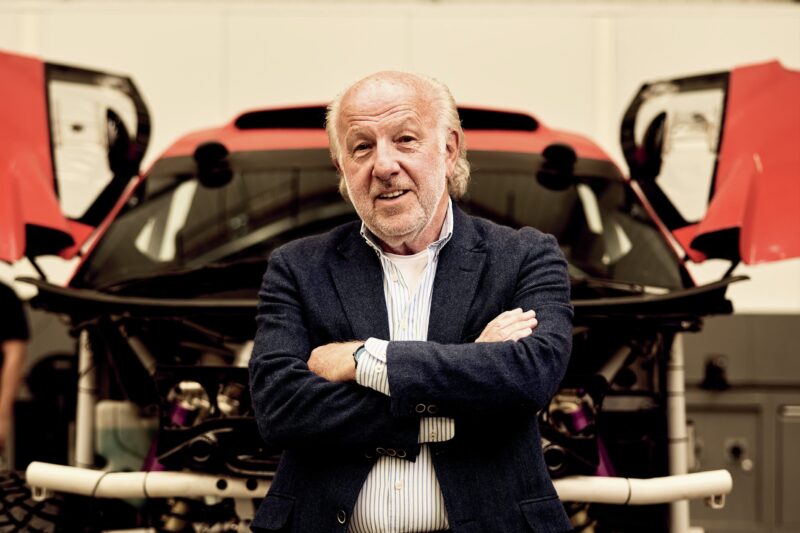
Prodrive has diversified, transferring its expertise into aerospace, marine and composites, as well as making ventilators for the NHS
“I’ve said I’ll do another three-year term and by the end of that I hope we’ll be in a good position. The measure of that will be whether we have an increasing number of licence holders, with more young people involved. The professional side can look after itself, they don’t need us to interfere – the reality is that work needs to be done at the grassroots level.
“We’re looking at building a hydrogen car for Le Mans“
“We’ve got to look at the cost of events as well. We’ve allowed the bureaucracy and necessary safety standards at the highest level of the sport to percolate down, where they’re a burden on the lower levels – and that’s fundamentally wrong. Let’s take safety belts and seats. We have rules and regulations that require us to change safety belts and seats on a cycle – previously five years, now 10. But when did anyone ever change their safety belts in a road car, which tend to last for donkey’s years? So why would we ever think safety belts in race cars are inherently dangerous after they reach their 10th birthday? There are lots of areas like that we need to consider more carefully.
“Governing bodies still have a lot to do, but we have a direction so we just need to be consistent in our approach and press on.
“It’s not easy, though. I’ve got a son in London who works for Formula E, but doesn’t own a car. I can remember when I was 16 and all I wanted was a car, but he says he doesn’t need one. He’ll call an Uber, or take the train if he’s coming home for the weekend – and this is somebody actively involved in racing. The jump from there to him perhaps wanting to participate is quite significant. We have to look at all these areas, but I don’t have a magic wand or an instant one-off ingredient that’s going to change anything. It’s just a sensible process of debate and discussion.
“We have to look at the participation of women in motor sport, too. It is still low – and there’s no logic to that. We need to treat children equally from an early stage and give girls the opportunity or the belief that they can succeed at engineering, or we’ll never get more female engineers, let alone participants. We’ve got to think about diversity in a broad way. It might take another generation, but I had a new granddaughter two weeks ago and hopefully she might reap the benefits of some of the things we’re doing now.”
She might become the first female Formula 1 racer since Lella Lombardi to score in a World Championship grand prix…
DR: “That’s what my son said!”
Our sport doesn’t exactly fit the wider perception of ‘environmentally clean’, does it?
DR: “We’ve got to be conscious of that and find ways of addressing it. We’re looking currently at how we can introduce renewable fuels into the sport. Can we get Cadet karts to run on biofuels or, ideally, an e-fuel and roll that out into other elements of the sport? We need to reduce our carbon footprint and make the sport more relevant in the longer term. At Prodrive we’re looking at the possibility of building a hydrogen car to run at Le Mans in 2024 – that’s one of our key goals.”
Going back to rallying, the British Championship was incredibly strong in your co-driving heyday, and then later when Colin McRae and Richard Burns broke through, but it has been through some lean times of late. How do you see its future?
DR: “We’ve got a challenge with the BRC, if I’m honest, and I haven’t got the immediate answer. We have formed a small group to think about it and to discuss what’s required. It has suffered from a lack of profile and reduced interest since the McRae/Burns era. Event organisers are exceptionally good, but if their rally takes place in Kielder or somewhere else in the middle of nowhere, it promotes itself naturally to aficionados but doesn’t really broaden its reach.
“It goes back to what I was saying about the lack of advice about promotion in the Blue Book. Look how things are done at the Ypres Rally, where everything is based in the town centre, the whole area knows about it and it becomes a huge festival. I do think the BRC has suffered from hiding away in remote locations and not engaging with the broader public. That reduces the event’s commercial value, so you get reduced investment and less coverage – it’s a vicious circle.”

Richard Burns’ single WRC title came in 2001 in the Impreza –a golden era for British rallying
The events were tucked away in the middle of nowhere when you were competing in the 1970s, but seemed to draw massive crowds…
DR: “True, but there wasn’t such a plethora of activities for people to do in those days, so they’d come out to watch. And that’s when a few mates would set out for three or four days, with flasks of coffee and sandwiches, sleeping in the car so they could follow the RAC Rally. People have become used to sport being served up on TV, or even their phone, so we’ve developed a lazier style of participation.”
Were you aware of competing in a golden era, or did it all seem normal?
DR: “I don’t think I was aware, but it’s only when you reflect and chat about it with friends that you appreciate what great days they were. I’m sure we all look back and think, ‘If only it could still be like that.’ Perhaps there are some ingredients that could be reintroduced. Mistakes have been made, though it’s only with hindsight that they have come to appear as such. Look at the way the World Rally Championship has been compressed into shorter routes. That came about 20 or so years ago because safety was the key issue – people walked into forests and stood wherever they liked. Fortunately there weren’t too many serious incidents, but the whole thing was on a knife edge.
“Quite correctly at the time, Max Mosley ordered a different approach and we ended up with centralised events that were easy to officiate. We have much better communications technology now, so could we not look at world or British championship events that took a more linear route, and perhaps travelled into towns? That would bring its own concerns, because of the extra mileage and the type of cars involved, so you have to think carefully. It’s important, though, to keep an open mind.”
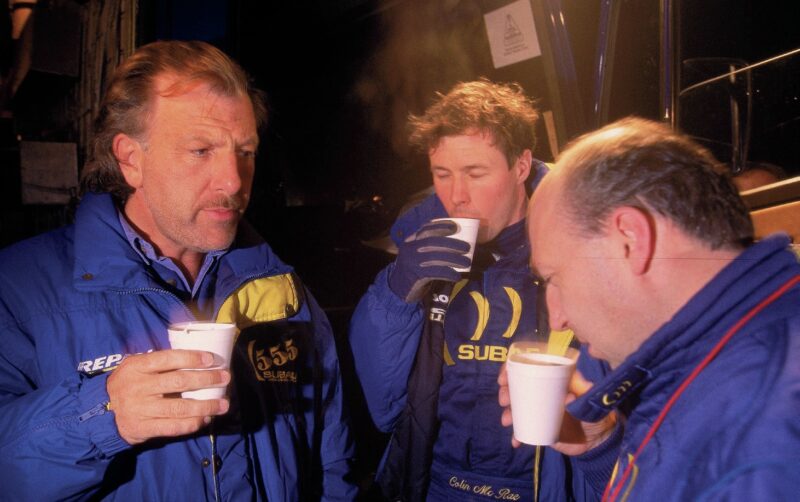
Keeping warm at the RAC Rally in 1994 with Colin McRae, centre, whose world title was just a year away
There must have been a few spectacular bust-ups with Colin McRae. Care to pick one?
DR: “There were a few of those… Colin was a complex individual in many ways, because his ability in the car was quite extraordinary yet out of it he could be relatively shy. Give him a couple of beers, however, and he could be different again. Socially he was great fun, very thoughtful and caring about things, but you’re right that there were some enormous bust-ups, because he was strong-willed and, as you might imagine, extremely competitive. I suppose the most public one was in the streets of a seaside resort on the Costa Brava [during the 1995 Catalonia Rally, when Prodrive imposed team orders favouring teammate Carlos Sainz]. But that’s all in the dim, distant past now – we ended up as great friends and working with both him and Richard Burns was an absolute delight.
“I’m not sure how many people realise that Colin was incredibly smooth in the car – really, really mechanically sympathetic. He understood that side of things very well. During his first couple of years with us, in fact, we had him helping in the workshop here. He drove the service van for Markku Alén when he was in the team and worked with the service crew – he knew his way around the car better than any other driver.”
One more thing. In the recent past I have quite often bumped into you at events such as Race Retro, wandering around among the public, looking at the cars and the memorabilia stalls. For all the success you’ve had in motor sport, I get the impression that the passionate kid from Ruthin is still in there somewhere.
DR: “He is and I think that passion carries you through life. If you didn’t have it, if you didn’t wake up in the morning feeling enthusiastic about the day or weekend ahead, what would be the purpose of carrying on?”
